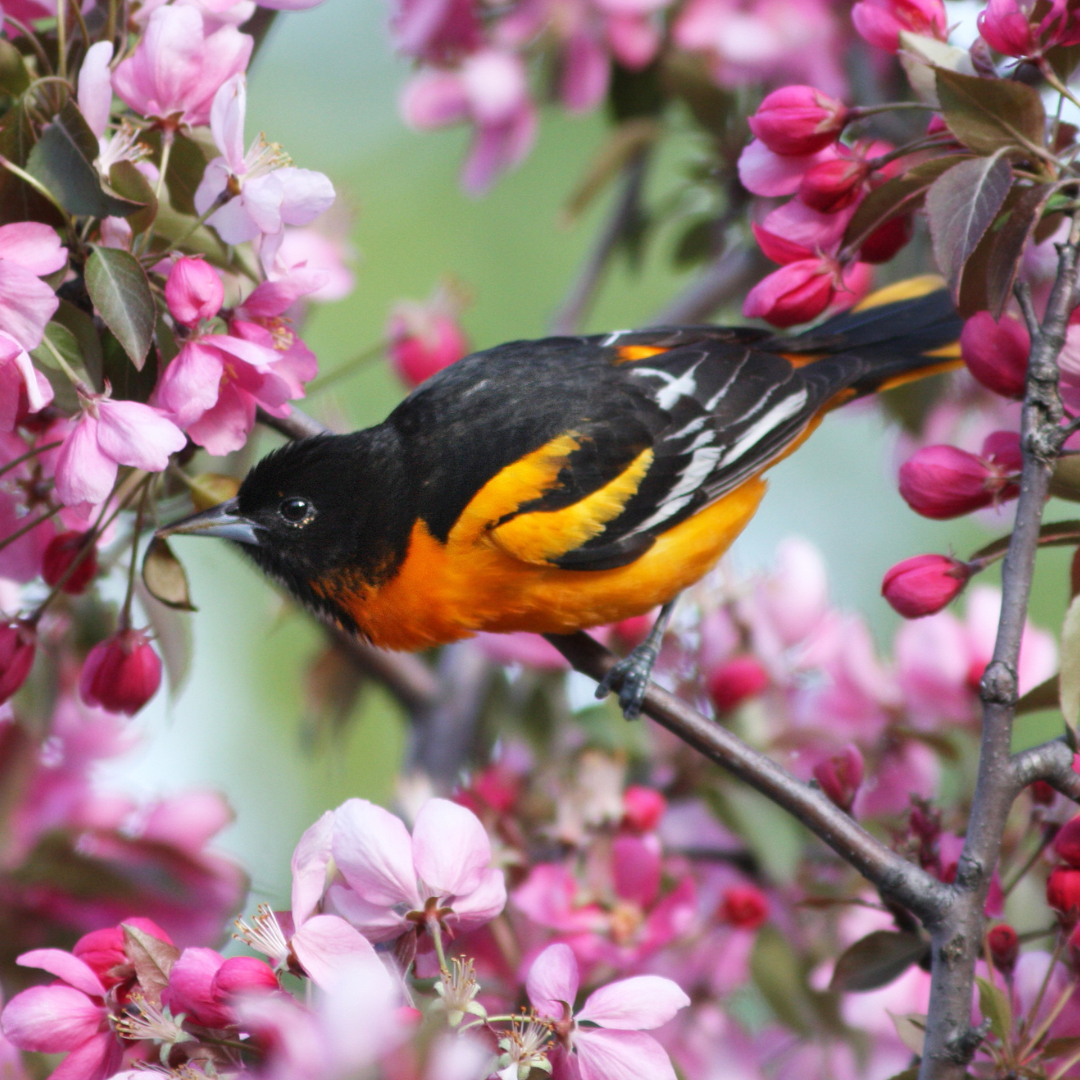 Invite birds to your backyard! Think beyond a typical ornamental landscape; imagine your yard as potential wildlife habitat. Get creative and design your yard as a naturescape to provide birds and other wildlife with their four requirements: food, water, cover, and nesting sites.
Invite birds to your backyard! Think beyond a typical ornamental landscape; imagine your yard as potential wildlife habitat. Get creative and design your yard as a naturescape to provide birds and other wildlife with their four requirements: food, water, cover, and nesting sites.Native plants are best:
❒ Bee Balm Monarda fistulosa: 2-3’. Hummingbird magnet! Lilaccolored blooms mid season. Cultivars in shades of red and pink. N
❒ Blanket Flower Gallardia aristata: 2’. Prolific orange and yellow flowers
mid and late season. Juncos and other sparrows eat the seeds. N
❒ Columbine Aquilegia spp.: 1-2’. Spectacular nodding flowers in many
colors. Early season blooms. Favored by hummingbirds. N
❒ Coneflower Echinacea angustifolia: 2-3’. Light purple flowers. Blooms
mid season. Seed heads are a food source for birds in winter. N
❒ Dotted Gayfeather Liatris punctata: 1’. Vibrant purple flowers late
season. Attracts hummingbirds in summer. Provides seeds for
finches and sparrows in fall. N
❒ Firecracker Penstemon Penstemon eatonii: 2’. Bright red flowers in
early-mid season. A favorite of hummingbirds.
❒ Goldenrod Solidago missouriensis or canadensis: 2-3’. Yellow flowers
in late season. Seeds in fall are a favorite of sparrows and finches. N
❒ Prairie Coneflower Ratibida columnifera: 2’. Yellow blooms mid and
late season. Prolific bloomer bears seeds enjoyed by many songbirds. N
❒ Salvia Salvia spp.: 1-2’. Vibrant shades of blue, purple, and rose spires
bloom mid season. Attracts hummingbirds.
❒ Showy Fleabane Erigeron speciosus: 2’. Showy purple flowers in
mid-late season. Seedheads provide a winter food source for birds. N
❒ Sunflower Helianthus maximiliani: 3-4’. Yellow flowers in late
season. Seeds are very popular with chickadees, goldfinches, siskins,
sparrows. Common Sunflower Helianthus annus is easily planted by
seed each year. N
Create “habitat layers”:
- • Plant tall canopy trees for nesting and roosting sites.
• Shrubs and small trees provide fruit, berries, seeds,
nesting sites, and cover for security
• Perennial and annual flowers, grasses and ground covers
provide seeds for birds, nectar for hummingbirds, and
flowers for pollinators
Cluster plants in masses: Group 3 or more of the same plant species together to create an attractive look and attract more birds.
Plant for density: Birds like dense groupings of plants with branches touching and intertwining, creating corridors of security. Large densely planted patches are more desirable than scattered plants.
Lose some lawn: Mowed grass provides no shelter and limited food. Make wide planting beds under trees filled with shrubs and flowers. Leave paths of mowed lawn between plantings.
Provide water: Treat your birds to a bird bath unless you are lucky enough to live by a stream or pond.
Be a little messy: Leave some leaf litter and woody debris for mulch, don’t over prune, & leave flower seedheads for winter food.
Here at Birds & Beasleys, we have plenty of supplies to help you Invite Birds to Your Backyard! Visit us for seed, fresh suet cakes, birdbaths, birdhouses and more!
Article Resource:
https://sacajaweaaudubon.org/



